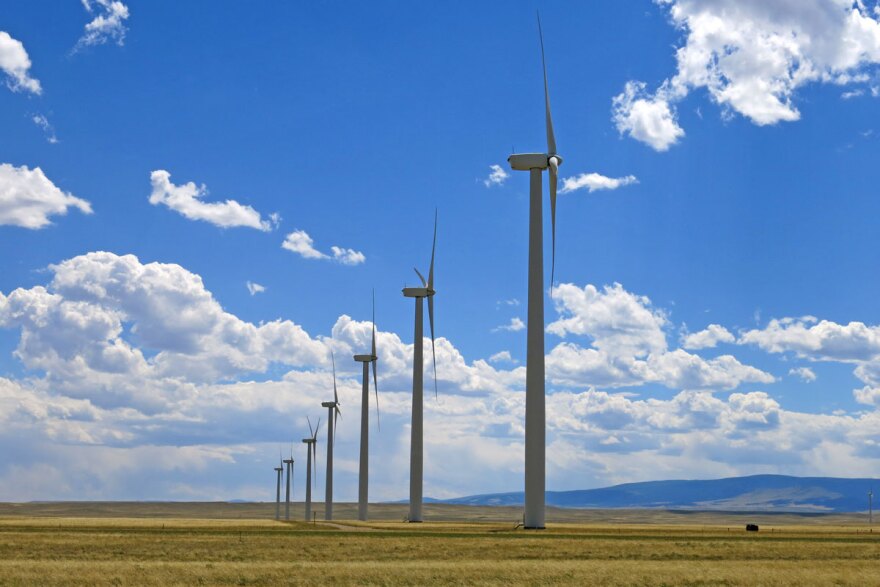Wyoming has lost hundreds of coal mining jobs in 2016. In contrast to coal, the renewables industry is growing nationwide. Generation capacity is projected to jump more than 50 percent by 2040, even in the absence of new environmental regulations. With that growth, there's a need for more components like blades and towers to build wind farms.
Wyoming Gov. Matt Mead's long-term energy strategy for the state includes plans to attract this kind of manufacturing. You only have to look to the state's neighbor to the south, Colorado, to find those kind of production jobs.
"Bringing manufacturers to this state would be probably one of the most incredible things you could ever do in the state of Wyoming right now, as the short-term Band-Aid to stop the bleeding on what we see from the outside as coal in its demise," said Bryan Boatright, a wind energy technology instructor at Laramie County Community College.
Many of Boatright's students go on to become wind turbine technicians, a job the Bureau of Labor Statistics considers the fastest growing in the country. Yet, as of 2014, there were only around 4,400 wind turbine technician jobs nationwide – and only a handful in Wyoming. In comparison, the number of people who work in wind turbine manufacturing is around 20,000, according to data compiled by the American Wind Energy Association.
Wyoming faces some big barriers though to attracting any of those jobs, said to Ben Avery, director of the business and industry division for the Wyoming Business Council. Challenges like a small available workforce, long travel distances to an international airport and something else more unique: the state's tax on wind production.
"It is interesting, when we're at American wind industry [conferences], one thing that everybody knows about, everybody makes the comment. 'Oh you're Wyoming, you're the only state that has a tax on wind.' Everyone says that. And that's not positive," Avery said.
On top of that, Wyoming is actually considering raising that tax.
Colorado, it is a very different scene. Over the past six years, the state has become a wind manufacturing hub, with 20 such facilities [.pdf], according to AWEA.
Vestas, the largest wind manufacturer in Colorado, employs 3,500 workers statewide. They have a blade and wind turbine nacelle plants in the Northern Colorado cities of Windsor and Brighton. They're tower manufacturing facility is located further south, in Pueblo.
Chris Welsh, an enthusiastic, fast-talking production manager at the Brighton location points out that the process of making these components is straight assembly.
"To see something like that, that size, that scale and the technology behind that to be able to manufacture that and put that out the door with honestly average men and women that are producing these," Welsh said. "We do have good skill sets but it's not great skills sets like master electricians and foremen from construction sites."
Vestas' Brighton workforce includes everyone from ex-teachers to convenience store workers.
Vice president and factory manager Scott Winner said Vestas chose to set up shop in Colorado because of access to rail networks, proximity to wind projects and an available labor force.
When asked how much workers here make, trying to figure out what these jobs mean for the local economy, Winner couldn't comment. He did say that media reports of $16.95 or more per hour plus benefits are "in the ballpark."
As communities across the country try to figure out how offset some of the job losses in fossil fuels, wages matter. The average Wyoming coal miner -- the folks who are losing jobs by the hundreds -- make around $34 an hour. So, even if wind factories did move across state lines, this shift alone wouldn't come close to replacing coal.
Inside Energy is a public media collaboration, based in Colorado, Wyoming and North Dakota, focusing on the energy industry and its impacts.






